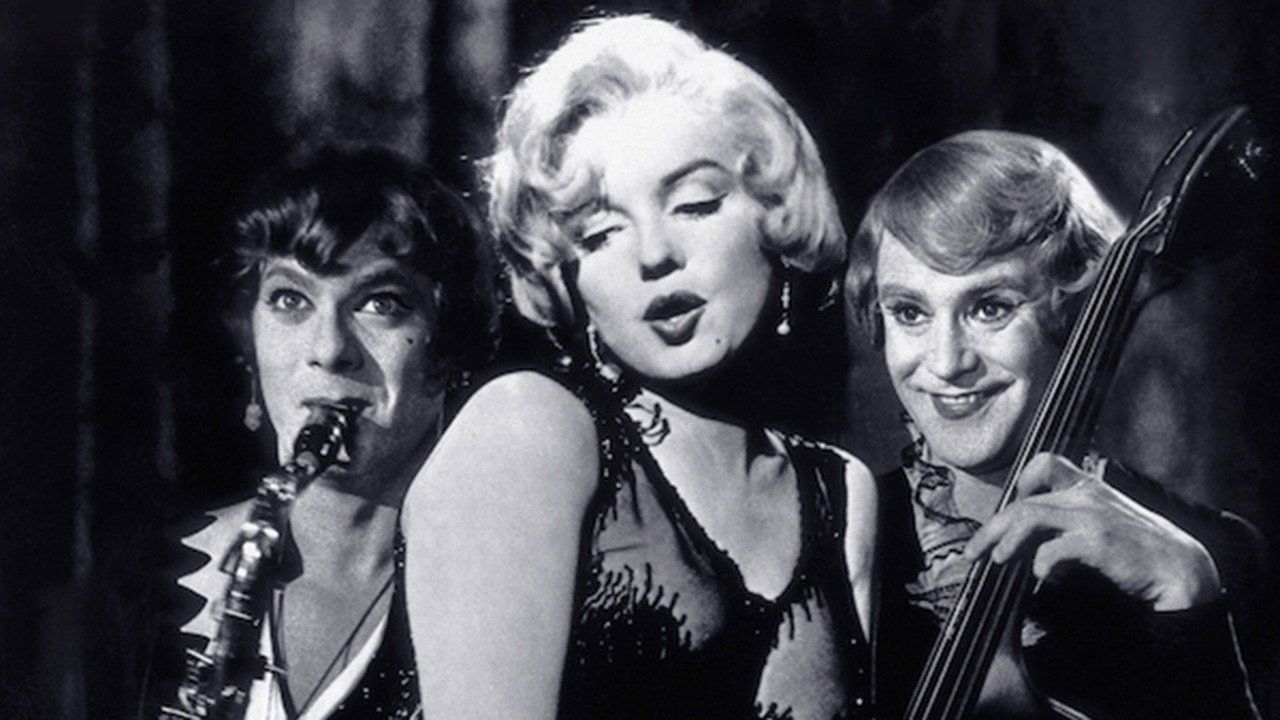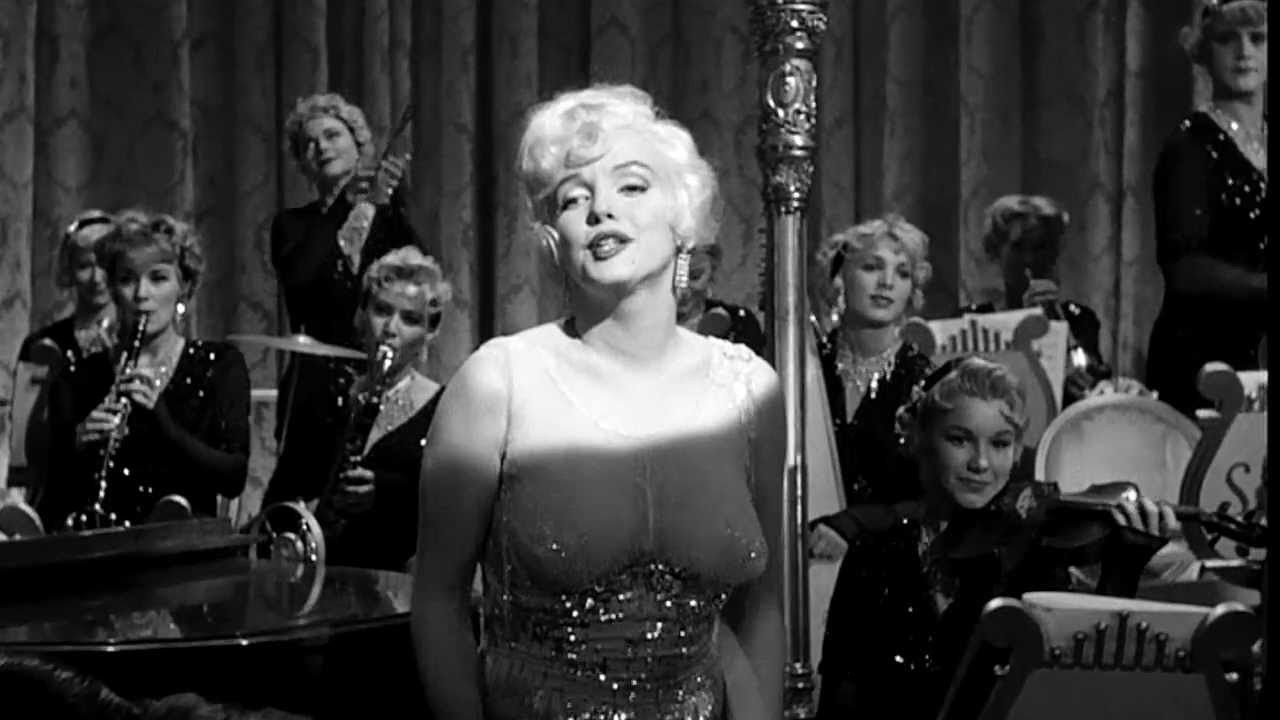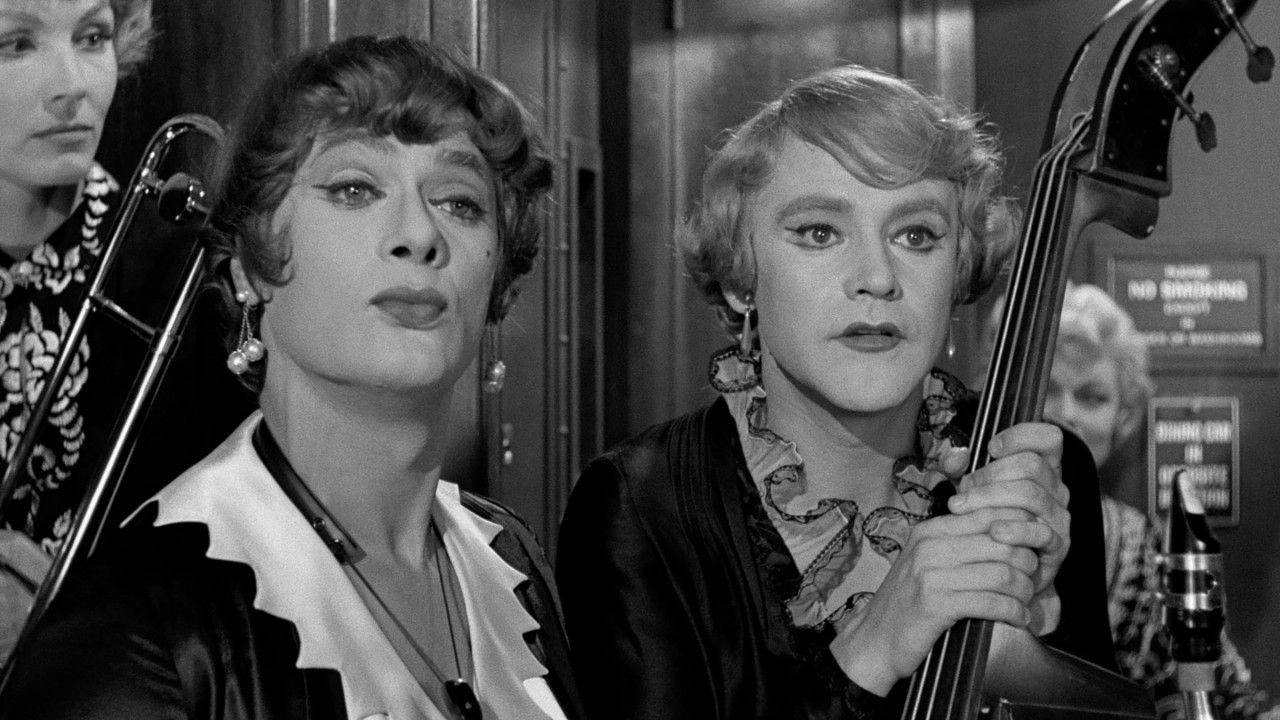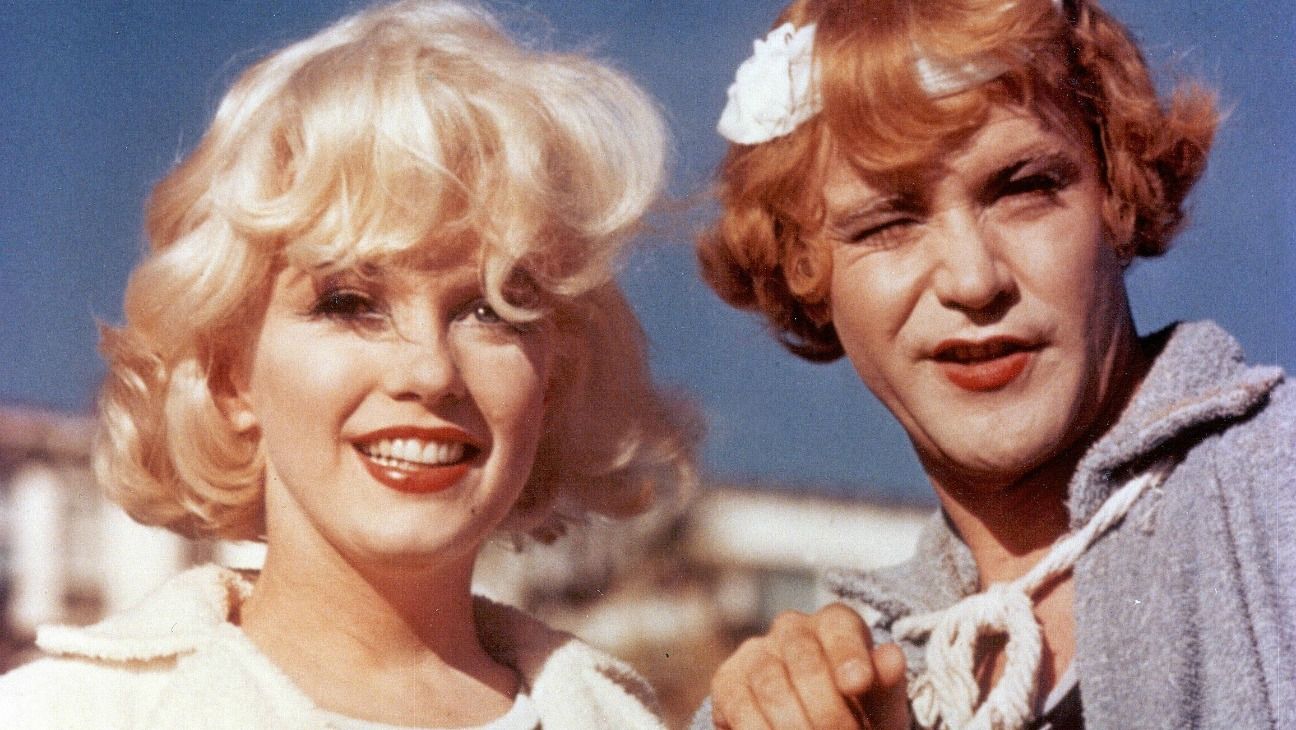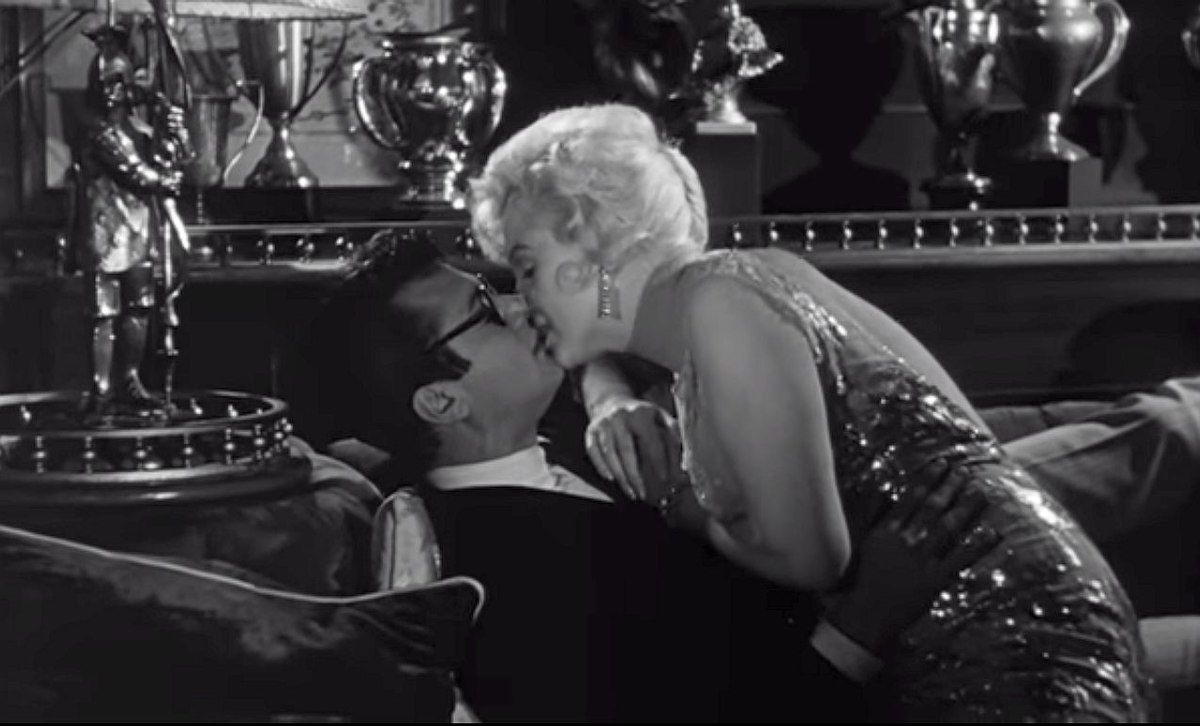When re-watching classic films, there’s always the risk that it won’t live up to your expectations. Maybe it doesn’t fit with today’s political and social sensibilities, and you find yourself moaning and groaning and sucking in your teeth, while wondering, “Why did I ever think this was okay?” Or maybe the humor has changed throughout the generations and now the hijinks land about as poorly as Disney’s depictions of Native Americans. While half-remembering the plot of Some Like It Hot, this is a valid concern - Tony Curtis and Jack Lemmon running around Miami in full makeup and dresses? Marilyn Monroe portraying an alcoholic gold-digger named “Sugar Kane?" It’s a recipe for some seriously uncomfortable mishaps.
Fortunately, Some Like It Hot is relatively exceptional in its field after hosting just over sixty years of legendary success and unearthing a wave of cultural changes that still affect modern society to this day. While the film does contain its fair share of flaws, there’s no doubt that its depiction of LGBTQ+ issues within mainstream society largely contributed to the social inclusion and accessibility of information surrounding the struggles that the community face every day. With respects to this, here is a list of all the ways Some Like It Hot has positively impacted the LGBTQ+ community.
Repeal of The Hays Code
Up until the mid-1960s, the Motion Picture Production Code (informally known as the Hays Code) held a tight grip on regulating censorship in film. Many of the requirements were, from a 21st century perspective, repressive, and designed to enforce a heavily religious, child-centric ideal of morality in Hollywood, including regulations against offensively termed depictions of “miscegenation” (interracial relationships) and “ridicule of the clergy.”
As is to be expected, “cross-dressing,” or the depiction of certain LGBTQ+ themes, was not permitted within the Hays Code, due to its consideration as an element of “sex perversion” and incompatibility with the imposed public consumption of 'traditional values.' In fact, following the release of Some Like it Hot, it was described by the Catholic League of Decency as, “seriously offensive to Christian and traditional standards of morality and decency.” However, the film made the decision to persevere with its original subject material and reject these constraints (like many other great mid-century films), resulting in the burlesque picture we all know and love.
Thankfully, when the Hays Code was repealed in November 1968 and replaced with the more inclusive Motion Picture Association film rating system, Some Like It Hot was at the forefront of films to help create a more inclusive and queer-friendly culture, giving more recent films the opportunity to openly discuss sexuality and gender expression.
Amiability Towards Homosexuality
At first glance, the film appears to pack some punches toward the gay community for the sake of cheap laughs, but many of the film’s jokes actually subvert the expectations of its heterosexual audience. In an era where homosexuality was still condemned, even constituting sodomy as a felony prior to 1962, a conversation between Jerry and Joe directly addressed the characteristic mentality of its time by asking, “Why would a guy want to marry a guy?” Though Jerry blurts out the quick response of, “Security,” the film offers a series of knowing winks that subtly reject the predisposed expectation that love should exclusively exist between a man and a woman.
In fact, during the course of the film, Jerry (“Daphne”) also rips off his blonde wig in front of Osgood, the older gentleman he’s considering marrying for money, in a bid to reveal his true status as a biological male. Osgood’s unflinching reply? “Well – nobody’s perfect.” While the script could have easily involved a scene surrounding Osgood’s enraged reaction to the revelation that his beautiful partner “Daphne” was secretly a man, the choice to sustain Osgood’s infatuation despite the masculinity of his partner shows the film’s support for the idea that love can exist regardless of gender expression or sexual orientation.
Poking Fun at Traditional Manliness
The reason why it’s so entertaining to witness conventionally attractive, commercially successful “leading men” dress up as women and parade around coastal Florida is because it’s generally pretty unexpected (at least it was in the age of Classic Hollywood Cinema). While Tony Curtis typically played a variety of charismatic romantics and womanizers in his earlier career, Some Like It Hot opened the door for heartthrob men to be perceived more effeminately. Though the drag was admittedly in a comedic context, films from earlier periods would have faced much more backlash, but Billy Wilder's masterpiece queers the issue without causing controversy.
Sure, a lot of it was played for laughs; it’s to be expected that part of the appeal of hiring Marilyn Monroe was developing the contrast between the absolute pinnacle of femininity and the clumsiness of Tony Curtis and Jack Lemmon lumbering around in heels and refusing to eat carbs. However, without mid-century comedies like this one normalizing and removing the “sinful immorality” aspect of men wearing dresses, the opportunity for a more serious conversation about LGBTQ+ equal rights may not have presented itself as quickly as it did.
Female Sexual Liberation
While the film did not definitively depict any of its main characters as anything other than heterosexual, the fight for equal rights amongst LGBTQ+ people and women respectively were interlinked during civil movements throughout the 1960s. In a further rejection of the traditional “Christian” values that prioritized misogyny and homophobia, Sugar’s character was presented as a complicated woman who'd had a series of short-term relationships and was generally portrayed as a byproduct of the blossoming sexual revolution. This helped break down the notion of the heterosexual “nuclear family” from the inside, one of the primary components of the stigma surrounding homosexuality.
Sugar may not have been an LGBTQ+ character (nor were any of the characters, if inclusion is to be reliant on self-appointed labels) but her role as a generally less-than-conservative woman may easily have helped change expectations surrounding women’s roles and therefore, by default, allowed change surrounding the roles of men and subsequent embodiments of sexuality and gender.
Whether you hate, love, or detachedly acknowledge Some Like It Hot, it takes a certain kind of notability for it to still be entering discussions more than fifty years after its original release. Though there are still great improvements to be made when it comes to providing representation for the LGBTQ+ community in film, Some Like It Hot was one of the original cornerstones in pushing society a step closer to inclusion and equality.

